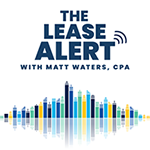Share this
by Matt Waters, CPA on April 3, 2025
If you had to guess how much money is lost due to OpEx and CAM inefficiencies in a year, what number would you throw out? Thousands? Tens of thousands?
For some enterprise companies, the answer is hundreds of thousands or even millions!
These inefficiencies must be addressed, and there are two ways to do it:
- Learn as much as possible about the task at hand to make sure you address it in the right way.
- Make sure you are using the best and most efficient tool for the job.
First, let’s make sure we’re all on the same page.
"The best practice is to stay on top of OpEx reconciliations and audits all along."
Understanding OpEx and CAM terms
One of the most intricate areas of lease administration and accounting involves operating expenses (OpEx) and common area maintenance expenses (CAM). Let’s start with key terms and strategies associated with both, then explore how software can help reduce associated waste and inefficiency.
OpEx stands for operating expenses and refers to all the expenses associated with a leased property besides rent. These expenses can include taxes, insurance, utilities, repairs, maintenance and administrative expenses.
CAM stands for common area maintenance, which is a type of operating expense. CAM expenses relate to maintaining the common areas that are shared by all tenants. Examples include landscaping, cleaning, repairs, security, snow removal and fees paid to property managers.
Because OpEx is the broader term, the rest of this article will use OpEx to refer to both OpEx and CAM.
Pro Rata Share is the term used to describe each tenant’s portion of OpEx. This is generally based on the square footage each tenant occupies relative to the whole property.
Expense Pool is used to describe the total amount of OpEx that the landlord accumulates over a set period. This total is generally then allocated to tenants based on their pro rata share.
Gross Up might be allowed per the lease contract; in which case the landlord is allowed to add a percentage to the tenant’s pro rata share.
Admin Fees might be allowed per the lease contract; in which case the landlord is allowed to add a fee to the tenant’s pro rata share.
Base Year is a year that other expenses are compared to for the purpose of putting a cap on how much OpEx can increase year over year and over time.
Percentage Cap sets the maximum amount that can be charged for each year by applying a percentage to the prior year’s amount.
Cumulative Cap sets a maximum amount that can be charged for each year by applying a percentage to the base year and then each subsequent year. This may be represented in a lease table exhibit.
Escrowed Charges are paid throughout the year to the landlord from the tenant and represent estimated OpEx. The estimate might be based on last year’s actual charges or another agreed-upon method.
Reconciliation typically occurs on an annual basis and involves comparing the escrowed charges to the pro rata share resulting in an additional amount due the landlord or a refund.
Audit is an action that can be taken by the tenant under some leases. An audit involves reviewing landlord records to understand the total expense pool, pro rata share and gross-up or admin charges.
Notice Dates are important for both the tenant and the landlord because each lease may have specific time limits on when statements, charges, reconciliations, or audit requests are due.
There are many moving pieces associated with OpEx, and unfortunately, each lease can be different. Tenants forfeit millions of dollars each year by relying solely on landlord invoices. I know this because there are entire consulting practices built around recovering this money from landlords. I interviewed one of the most respected lease audit experts, Al Stabile, on season 1 of The Lease Alert podcast.
Engaging with one of these consultants is a good idea especially if it has been a while since your company took a deep dive into OpEx.
OpEx savings in the real world
While consultants can make a major difference, the best practice is to stay on top of OpEx reconciliations and audits all along. That’s where technology can help.
Advanced lease management features like the OpEx audit tool in CoStar Real Estate Manager track or calculate all the key data points discussed in this article and more on a lease-by-lease basis. On top of that, they make it easy to get information in and out with validated upload templates, standard industry-leading reports and ad-hoc reporting capabilities.
This makes a particularly important difference to retail lease administration.
So make sure your lease management platform has the features and functionality you need to address these pesky and costly inefficiencies.
Share this
- Lease Accounting Software (90)
- ASC 842 (83)
- Accounting Teams (52)
- Lease Administration Software (27)
- Retail Tenants (16)
- Commercial Real Estate (14)
- Lease Management (12)
- Real Estate Teams (9)
- ESG (8)
- Market Data and Analytics (8)
- Success Stories (8)
- News and Media Coverage (5)
- Transaction Management Software (2)
- frs 102 (2)
- Customer Success (1)
- Office Tenants (1)
- September 2025 (1)
- July 2025 (2)
- June 2025 (4)
- May 2025 (2)
- April 2025 (2)
- March 2025 (6)
- February 2025 (3)
- January 2025 (4)
- December 2024 (1)
- October 2024 (4)
- September 2024 (2)
- August 2024 (4)
- July 2024 (3)
- June 2024 (3)
- May 2024 (4)
- April 2024 (1)
- February 2024 (1)
- December 2023 (4)
- November 2023 (6)
- October 2023 (4)
- September 2023 (2)
- August 2023 (2)
- July 2023 (3)
- May 2023 (2)
- March 2023 (1)
- February 2023 (3)
- January 2023 (1)
- December 2022 (3)
- November 2022 (4)
- October 2022 (4)
- September 2022 (1)
- August 2022 (4)
- June 2022 (1)
- May 2022 (4)
- April 2022 (8)
- March 2022 (3)
- February 2022 (1)
- January 2022 (2)
- November 2021 (2)
- October 2021 (2)
- September 2021 (3)
- August 2021 (15)
- July 2021 (3)
- June 2021 (1)
- May 2021 (1)
- April 2021 (3)
- March 2021 (1)
- January 2021 (1)
- December 2020 (3)
- November 2020 (1)
- October 2020 (2)
- September 2020 (2)
- August 2020 (3)
- July 2020 (2)
- June 2020 (3)
- May 2020 (1)
- April 2020 (1)
- March 2020 (1)
- February 2020 (1)
- December 2019 (1)
- October 2019 (1)
- September 2019 (2)
- August 2019 (3)
- July 2019 (2)
- April 2019 (69)
- October 2018 (1)
- August 2018 (1)
- July 2018 (1)
- June 2018 (1)
- May 2018 (1)
- April 2018 (2)
- March 2018 (3)
- February 2018 (2)
- December 2017 (1)
- August 2017 (3)
- June 2017 (2)
- May 2017 (2)
- April 2017 (1)
- March 2017 (2)
- January 2017 (2)
- November 2016 (2)
- July 2016 (1)
- June 2016 (1)
- July 2015 (1)
- March 2015 (1)
- June 2014 (1)
- April 2014 (11)
- October 2011 (1)
You May Also Like
These Related Stories

How to Overcome The Top 5 Audit Risks with ASC 842 Software

Automating the Roll Forward Report





